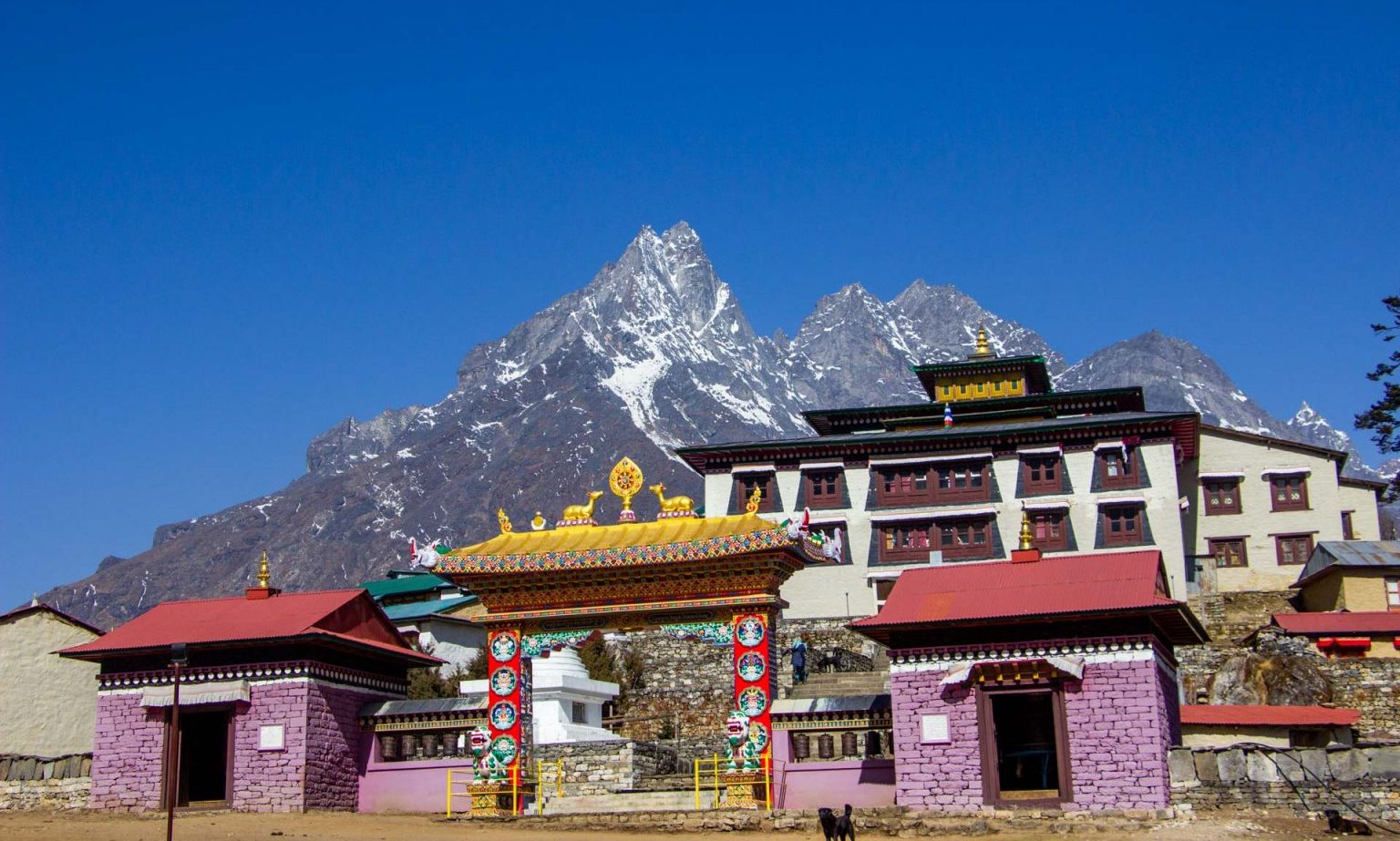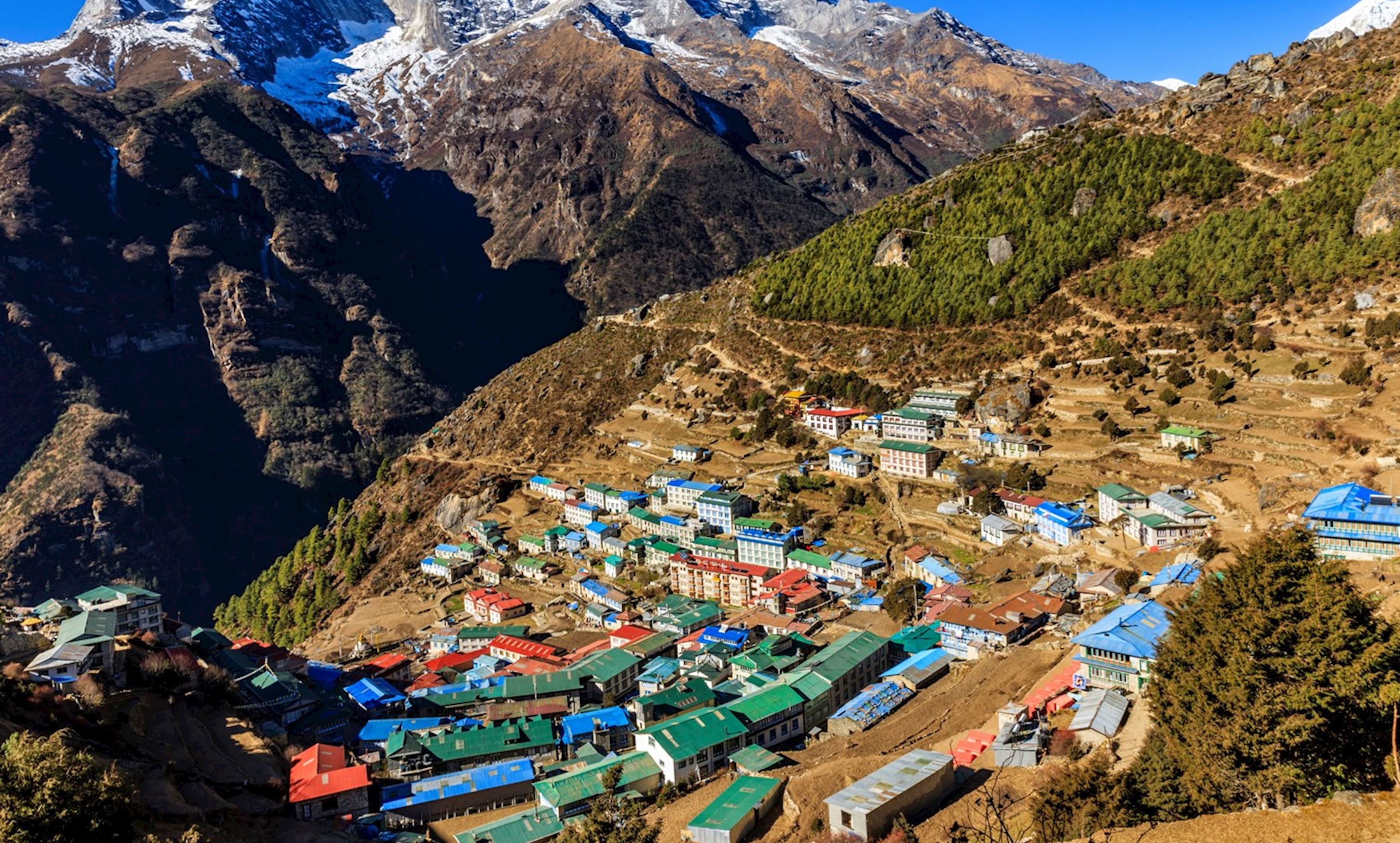Embarking on an Everest trekking journey unveils a world of unparalleled natural beauty, rich cultural heritage, and breathtaking high-altitude landscapes. From the iconic Everest Base Camp to the serene Gokyo Lakes, each step introduces adventurers to the heart of the Himalayas. Luxury Holidays Nepal Pvt. Ltd. expertly guides trekkers through must-see places in the Everest region, ensuring an experience filled with the best viewpoints, cultural sites in the Khumbu region, and unforgettable encounters. Among these jewels are the Tengboche Monastery, a spiritual sanctuary offering panoramic views; Namche Bazaar, the vibrant hub of the Sherpa community; and the Kala Patthar sunrise view, presenting the most mesmerizing spectacle of Everest's peak. This journey, enriched with visits to traditional Sherpa villages and guided by a comprehensive Everest trekking itinerary, promises a blend of adventure, cultural immersion, and personal achievement.
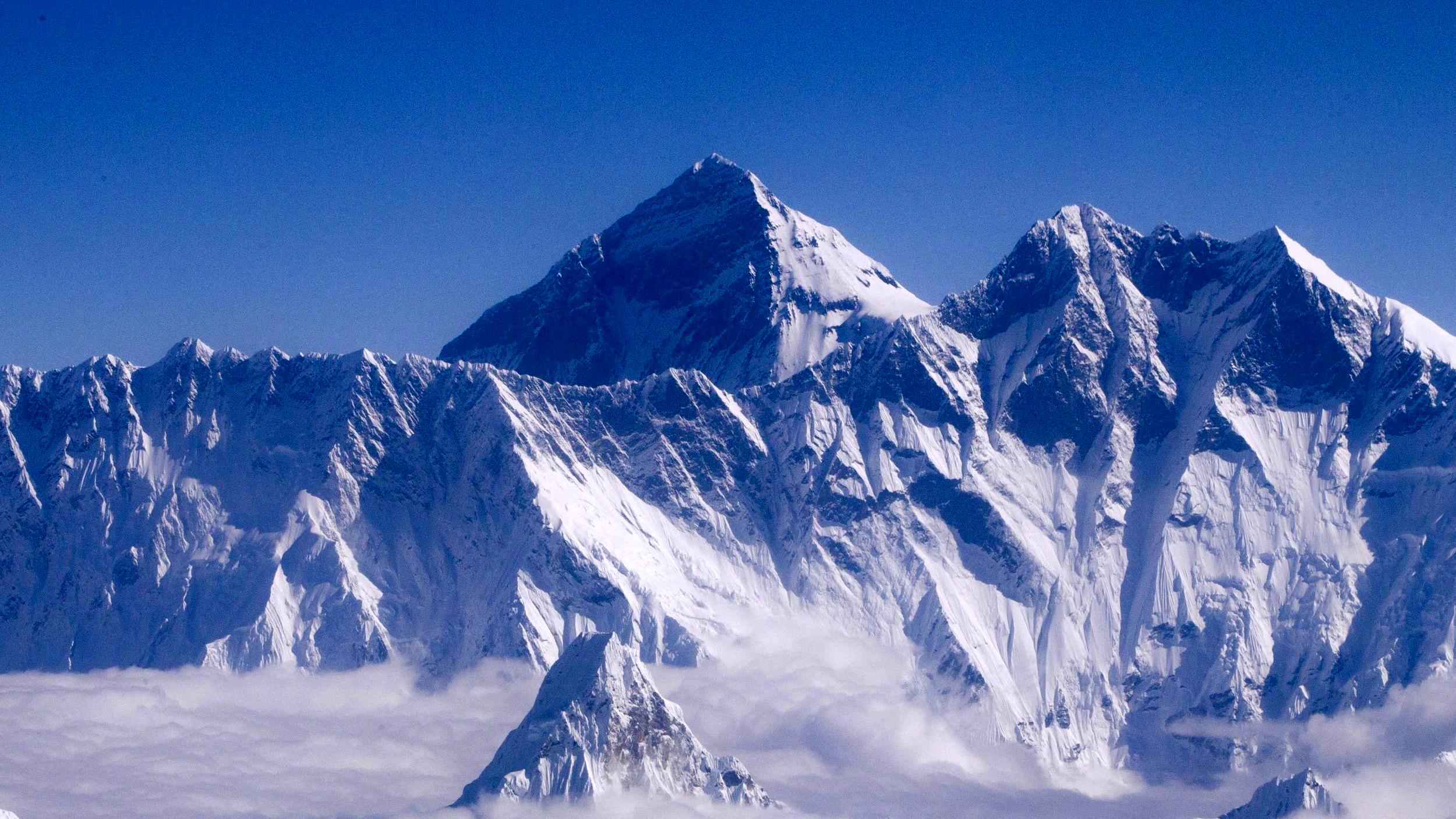
We pride ourselves on being the premier choice for adventurers seeking to explore the best places during their Everest trekking journey. Our deep-rooted expertise in crafting bespoke treks through the Everest region sets us apart, ensuring our guests experience the majestic beauty of the Himalayas in unparalleled luxury and comfort. From the iconic Everest Base Camp to the serene Gokyo Lakes, our itineraries are designed to showcase the most breathtaking landscapes and cultural highlights. Our knowledgeable guides, who are deeply familiar with the Everest region's trails, culture, and history, lead you through must-see places, offering insights and access that go beyond the ordinary. With Luxury Holidays Nepal, every detail of your journey is meticulously planned, from acclimatization spots to ensure your comfort at high altitudes, to selecting the best viewpoints for awe-inspiring panoramas of the world's highest peaks. Our commitment to sustainable trekking practices ensures that your adventure not only leaves a lasting impression on you but also positively impacts the local communities and environment. Choosing Luxury Holidays Nepal means embarking on an Everest trek that is not just a journey but a lifetime experience, curated with the utmost care and expertise to make it truly unforgettable.
Everest Base Camp (EBC)
Everest Base Camp (EBC) stands as the pinnacle of trekking destinations within the majestic Everest region, offering adventurers an unparalleled opportunity to stand at the foot of the world's highest mountain, Mount Everest. This iconic location is not just a point on the map but a journey through some of the most breathtaking landscapes on Earth, culminating in a place where one can truly feel the magnificence of the Himalayas.
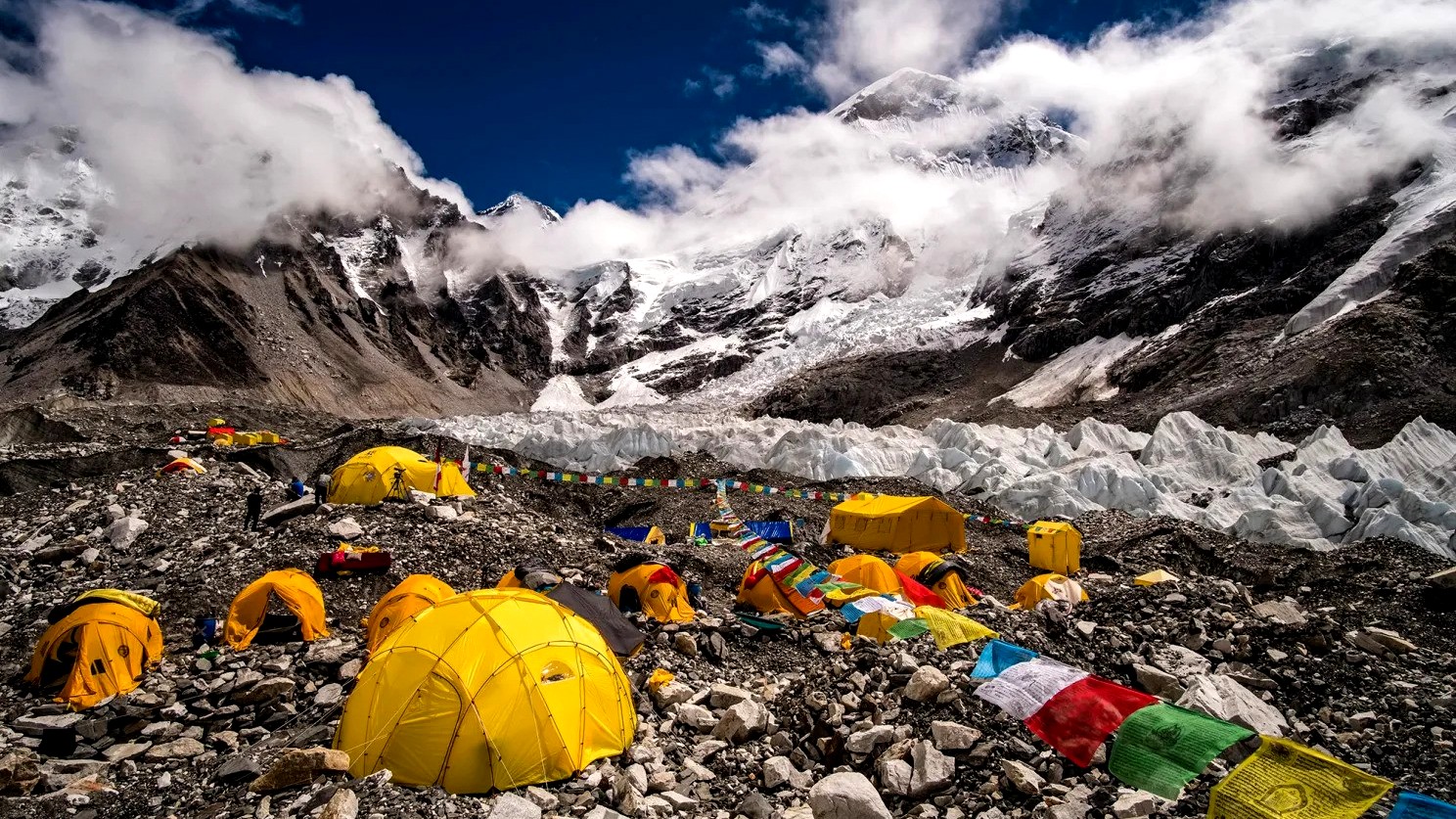
Why Everest Base Camp is a Must-Visit
-
Proximity to Mount Everest: EBC offers the closest view of Mount Everest's towering peak without the need for mountaineering equipment, making it a sought-after destination for trekkers worldwide.
-
Spectacular Scenery: The trek to EBC is filled with stunning vistas, including vast glaciers, rugged mountain passes, and towering peaks. Trekkers are treated to unparalleled views of mountains like Lhotse, Nuptse, and Ama Dablam, among others.
-
Cultural Experience: The route to Everest Base Camp winds through vibrant Sherpa villages, monasteries, and prayer flags, offering a deep dive into the rich culture of the Khumbu region's indigenous people.
-
Achievement and Adventure: Reaching EBC is considered a significant achievement for many trekkers, symbolizing personal endurance and the spirit of adventure. It's a journey that tests limits and rewards with incredible experiences.
What to Expect on the Trek to Everest Base Camp
-
Trekking Route: The journey typically begins with a flight from Kathmandu to Lukla, followed by a trek through Phakding, Namche Bazaar, Tengboche, Dingboche, Lobuche, and Gorak Shep before reaching Everest Base Camp. This route is renowned for its beauty and challenges.
-
Acclimatization Days: To ensure trekkers adjust to the high altitude, acclimatization days are planned in villages like Namche Bazaar and Dingboche, where trekkers can explore local attractions and adapt to the altitude.
-
Unique Landscapes: The trek passes through the Sagarmatha National Park, offering a chance to witness unique flora and fauna adapted to high altitudes, alongside the awe-inspiring Khumbu Glacier.
-
Cultural Highlights: Visits to monasteries such as Tengboche provide insight into the spiritual life of the Himalayan people, while interactions with the Sherpa community offer a glimpse into their rich cultural heritage and mountaineering prowess.
With Luxury Holidays Nepal, your trek to Everest Base Camp is not just a journey but an experience meticulously designed to offer comfort, safety, and an immersive cultural experience. Our expert guides ensure you enjoy all the highlights while respecting the natural environment and local communities. Trekking to EBC with us promises an adventure that stays with you for a lifetime, filled with stories of the majestic Everest and the warmth of the Himalayan people.
Kala Patthar
Kala Patthar is widely acknowledged as one of the most extraordinary vantage points in the Everest region, offering trekkers a breathtaking, unobstructed view of Mount Everest, the highest peak on Earth. This remarkable site is a highlight for many on their Everest trekking adventure, providing a panoramic spectacle that encompasses several of the world's tallest mountains and offers a unique perspective on the beauty of the Himalayas.
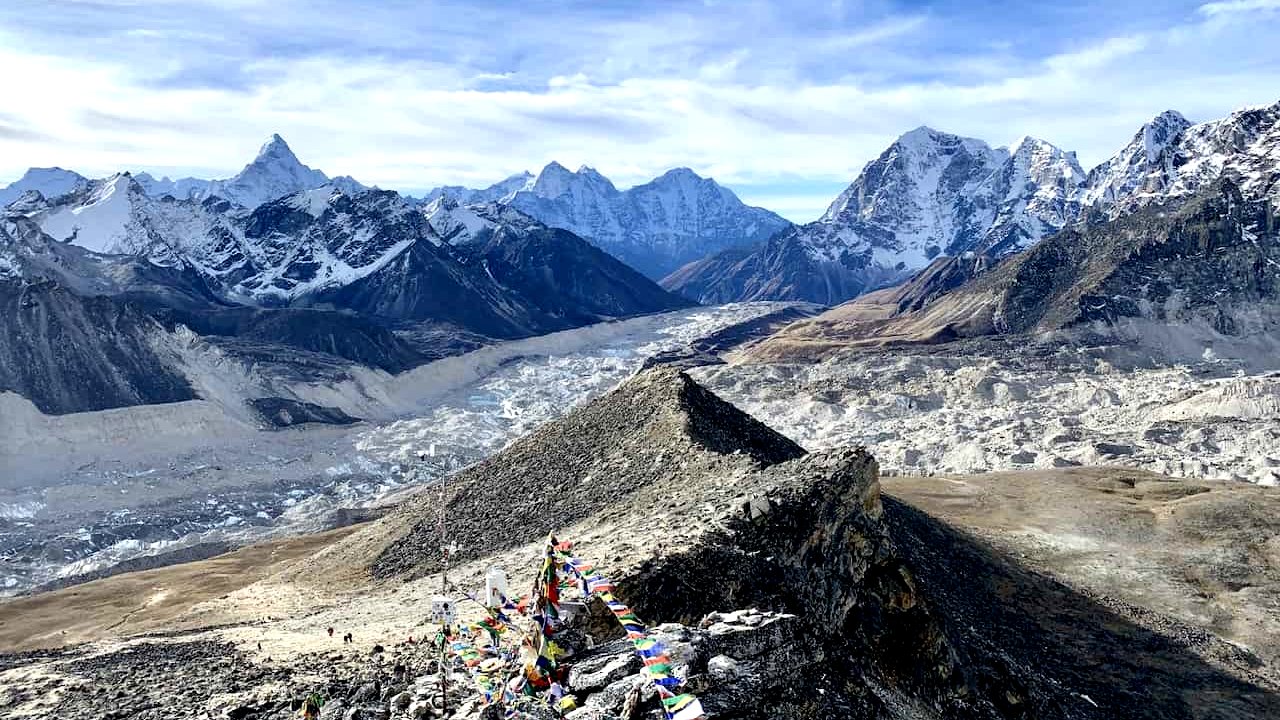
Why Kala Patthar is Unmissable
-
Unparalleled Views of Everest: Kala Patthar provides the closest and most accessible views of Mount Everest's summit, along with other towering peaks like Nuptse and Changtse, without the need for climbing equipment.
-
Sunrise and Sunset Views: The sunrise and sunset from Kala Patthar are legendary, with the golden hues of the sun casting a breathtaking glow over Everest and the surrounding peaks, creating a magical and unforgettable experience.
-
Photography: For photography enthusiasts, Kala Patthar offers unmatched opportunities to capture the grandeur of the Himalayas, with clear, sweeping vistas that are perfect for panoramic shots and landscape photography.
-
Achievement: Reaching Kala Patthar is a significant accomplishment in itself, standing at an altitude of 5,545 meters (18,192 ft). It offers a sense of achievement akin to that of reaching Everest Base Camp but with the added reward of spectacular views.
What to Expect on the Trek to Kala Patthar
-
Trekking Route: The journey to Kala Patthar typically follows the same route as the Everest Base Camp trek, with a final push from Gorak Shep. This last leg of the trek is challenging but immensely rewarding, with dramatic landscapes unfolding as you ascend.
-
Altitude and Conditions: Situated at a higher altitude than Everest Base Camp, Kala Patthar's environment can be challenging due to cold temperatures and thin air. Proper acclimatization and preparation are crucial for a successful ascent.
-
Timing: Trekkers often start their ascent in the early morning hours to catch the sunrise over Everest. The timing ensures not only the best light for viewing and photography but also clearer skies, as the weather in the Himalayas can change rapidly.
-
Physical Challenge: The hike to Kala Patthar is considered strenuous due to its steep incline and high altitude. It requires a good level of fitness, determination, and proper acclimatization to ensure safety and enjoyment.
With Luxury Holidays Nepal, your trek to Kala Patthar is carefully planned to offer an optimal experience, with guides who ensure your safety and well-being throughout the journey. Our tailored itineraries allow for ample acclimatization and are designed to suit your pace, ensuring that your ascent to Kala Patthar is as rewarding as it is unforgettable. This pinnacle of the Everest trekking experience promises not just a physical journey but a voyage that uplifts the spirit and enriches the soul with its majestic beauty.

